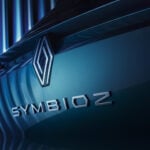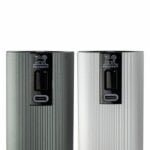A patent application states that people who like internal combustion engines “may get bored” with the driving characteristics of an electric vehicle.
Hyundai currently produces a solid line of performance engines powered by internal combustion engines, but the Korean automaker is also a major player in the race for electrification. As such, he seems to understand that a balance must be struck between the new world of electric vehicles and internal combustion vehicles.
Many people do not want change, and according to a recent patent application, Hyundai still wants to respond to ICE buyers, even if the car does not have an internal combustion engine.
A patent application document released last week details a system by which idling, shifting, stopping / starting and more are simulated by audio signals, visual displays and vibrations from the car’s engine.
The text states that a person who is accustomed to driving a car with an internal combustion engine “may get bored due to the absence of classical sounds, a transmission, a clutch or the like” when buying an electric vehicle. As such, it may be desirable to “differentiate an electric vehicle by providing a virtualization function for the driving characteristics of an internal combustion engine vehicle”.
This translates into programming an EV to behave like a car with a gasoline engine.
Toyota is not sleeping
Now, that may sound familiar. Toyota is also considering doing so in its electric vehicles.
In short, the Japanese carmaker sees the potential in simulating a manual transmission in an electric vehicle. This patent application from Hyundai is less focused on enthusiasts, though. It seems to be designed to be applicable to any ordinary EV without adding or removing any hardware.
The vibrations are, well, exactly what you would expect from a car with an internal combustion engine. When idling, it vibrates only slightly, and then, as the car accelerates, the frequency increases until a fictitious gear changes, at which point the software simulates this.
The documentation provided with the patent application shows that this virtual transmission system would have eight stages, although the exact number is not specified. In theory, the number of gears could be selected by the user or determined by Hyundai. In terms of vibration signature and engine sound, it is also seemingly infinitely customizable.
We’ll have to wait and see if any of these things come to light. The project may never become a reality, or it may only become available as an obscure option through an over-the-air upgrade.

 Renault’s compact family SUV will be called the Symbioz -.
Renault’s compact family SUV will be called the Symbioz -. Peugeot and its new range of salt and pepper mills -.
Peugeot and its new range of salt and pepper mills -. A new Uber Eats ad is being criticized for showing a peanut allergy -.
A new Uber Eats ad is being criticized for showing a peanut allergy -. Pagani announces new track-based hypercar, known as the Huayra R Evo -.
Pagani announces new track-based hypercar, known as the Huayra R Evo -. Introducing the Oscars in the Best Casting category -.
Introducing the Oscars in the Best Casting category -.